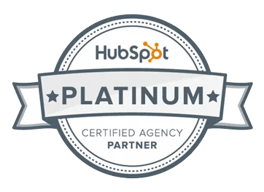Your sales team's technology stack can sometimes feel like a cluttered garage workshop. Power tools and gadgets remain unused, collecting dust in the back, and when you need a specific tool, you don’t have the right one.
The challenge then becomes about adopting new technology and managing and optimizing what you already have.
To help sales operate more efficiently and drive revenue, it’s time to declutter your tech portfolio, ensuring that every tool you use is there for a reason and adds value to your organization.
Why Sales Needs the Right Technology
The right sales tools can help salespeople understand when to contact specific prospects and what to discuss with them. By avoiding outreach to leads that aren't yet ready, these tools ensure time is spent adding value to the right leads at the most opportune moments.
Another reason to invest in sales technology is that the new generation of employees expects technology at their fingertips. Using old-fashioned sales methods, such as notebooks and spreadsheets, risks losing not only sales but also your best talent.
Steps to Getting the Right Tool Stack for Your Sales Team
Step 1. Conduct a Tools Audit
The first step is to take stock of what you have. Much like cleaning out the garage, you need to identify what you use, what you’ve outgrown, what was a mistake from the start, and what you lack.
List the tools your sales team currently uses to track leads, deals, customer conversations, etc. Detail the purpose and specific use case. If you find tools without a clear purpose or are outdated or inefficient, consider them candidates for elimination.
If you’re still tracking leads and customers in spreadsheets or, even scarier, each salesperson is managing their own way of tracking, note that also. One of the biggest challenges many businesses face is not having a centralized system for data-keeping.
Step 2. Identify MisAlignment
Seamless communication between sales and marketing teams is crucial. In fact, one key reason a business needs a CRM like HubSpot is to bridge this common gap, offering a holistic view of all data and customer interactions.
Tools that support multiple projects, goals or team members streamline workflows and enhance productivity. Get feedback from your team about what they rely on – or wish they had – for collaboration. The best tools are those that centralize processes and information.
Step 3. Prioritize Integrations
A tangled web of tools can be mentally and financially draining. Aim for tools that offer extensive integrations, connecting your tech stack on a single platform. This can significantly reduce the mental load and financial burden. For instance, with its plethora of integrations, a tool like HubSpot can serve as a model for what to look for, enabling seamless collaboration without the constant need to switch contexts.
Step 4. Get Feedback
This involves understanding how your team uses each tool and its impact on the organization. A straightforward method is to survey your teams, asking which tools they use, what’s missing and what causes unnecessary frustration. Feedback can guide your decisions on what to keep, replace, retire or invest in.
The No. 1 Tool Every Sales Team Needs – a CRM
Once you've implemented the initial steps, it's crucial to either assess the CRM you're using or, if you still need to adopt one, to explore your options. CRMs are powerful, offering multiple features designed to address numerous challenges. They enhance salespeople's efficiency and refine sales processes.
HubSpot, and its many game-changing features, is a solution worth vetting. It combines CRM functionality with marketing automation and customer service capabilities, aiming to simplify and enhance various business processes.
 "Your marketing and sales might rely on a mix-match of tools — a separate one for email, a chatbot here, a service request manager there, and yet another for tracking sales activities," notes Lindsay Eilerman, Chief Client Experience Officer at Marketing Essentials. “HubSpot offers a one-stop solution that consolidates these processes, dramatically reducing the time spent navigating between different systems and managing data, thereby reducing costs and driving better results."
"Your marketing and sales might rely on a mix-match of tools — a separate one for email, a chatbot here, a service request manager there, and yet another for tracking sales activities," notes Lindsay Eilerman, Chief Client Experience Officer at Marketing Essentials. “HubSpot offers a one-stop solution that consolidates these processes, dramatically reducing the time spent navigating between different systems and managing data, thereby reducing costs and driving better results."
Where to Start?
Managing your tech stack is an ongoing process that requires regular evaluation and adjustments to ensure that your technology empowers and helps drive revenue rather than encumbers.
 Contact us for a free assessment of your tech stack and to help you map out the best solution for your needs. As a HubSpot platinum partner, we can negotiate the best pricing for your organization if HubSpot is the right fit for you.
Contact us for a free assessment of your tech stack and to help you map out the best solution for your needs. As a HubSpot platinum partner, we can negotiate the best pricing for your organization if HubSpot is the right fit for you.
Whether you’re just getting started or are looking to take greater advantage of technology to improve sales and marketing performance, our team can help. Contact us today.


